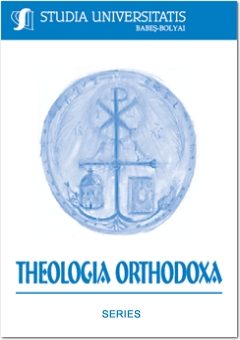TEMA FECIOAREI CU PRUNCUL - DE LA ICOANA BIZANTINĂ LA RETABLUL APUSEAN DIN PERIOADA PROTORENAŞTERII ITALIENE
THE VIRGIN AND CHILD THEME, FROM THE BYZANTINE ICON TO THE WESTERN ALTARPIECE OF ITALY FROM THE PRE-RENNAISANCE PERIOD
Author(s): Marcel Gh. MunteanSubject(s): Christian Theology and Religion
Published by: Studia Universitatis Babes-Bolyai
Keywords: Virgin; Byzantine; Dueccento; Treccento; Cimabue; Paolo Veneziano; Christian.
Summary/Abstract: The Virgin and Child Theme, from the Byzantine Icon to the Western Altarpiece of Italy from the Pre-Rennaisance Period. In the last centuries and especially after the 1st Vatican Council , the Roman – Catholic Church recognizes Mary not only as Mother of God and Ever-Virgin, as established at the Third Ecumenical Council of Ephesus (431), but also as immaculately conceived (the Immaculate Conception), as risen to heaven with the body and as a saviour, alongside Jesus Christ. The Virgin’s increasingly exemplary presence, proved by her appearances at Lourdes or Fatima, which were accepted by the Western Church, and the major role she plays in the Orthodox Christian world, made us consider this major research, seeing it as an essential approach, both as an open door to theological universe and also from an artistic point of view. While in all the Byzantine paintings, the Virgin and Child theme follows the rules established in Erminia, as does the entire Eastern European Church, the Roman Catholic Church approaches this theme using multiple interpretations. Tenderness, kindness, nobility, beauty, and especially a humanist vision or deliberately naturalistic play, timidly started in Dueccento or Treccento on the Italian site, represents the new vision. This sensitivity can be seen in paintings by Cimabue, Giotto di Bondone, Duccio di Buoninsegni, Simone Martini, Paolo Veneziano and others. The Byzantine iconography remains faithful to the Christian tradition foreshadowed by the early Christianity and included in the Athon Erminia after the 10th century. Mary's gentle face that harmonizes with that of her son is watching us today, urging us to welcome peace of mind, sympathy, brotherly love, charity and certainly prayer in our everyday life. The Western artistic creation, with its increasing interest towards humanist sciences transformations and beyond, will impose an ever-changing Marian typology, although in general terms, until the year 1000, when it recognized and acknowledged the Eastern Church influences.
Journal: Studia Universitatis Babes-Bolyai - Theologia Orthodoxa
- Issue Year: LVII/2012
- Issue No: 2
- Page Range: 193-205
- Page Count: 13
- Language: Romanian

